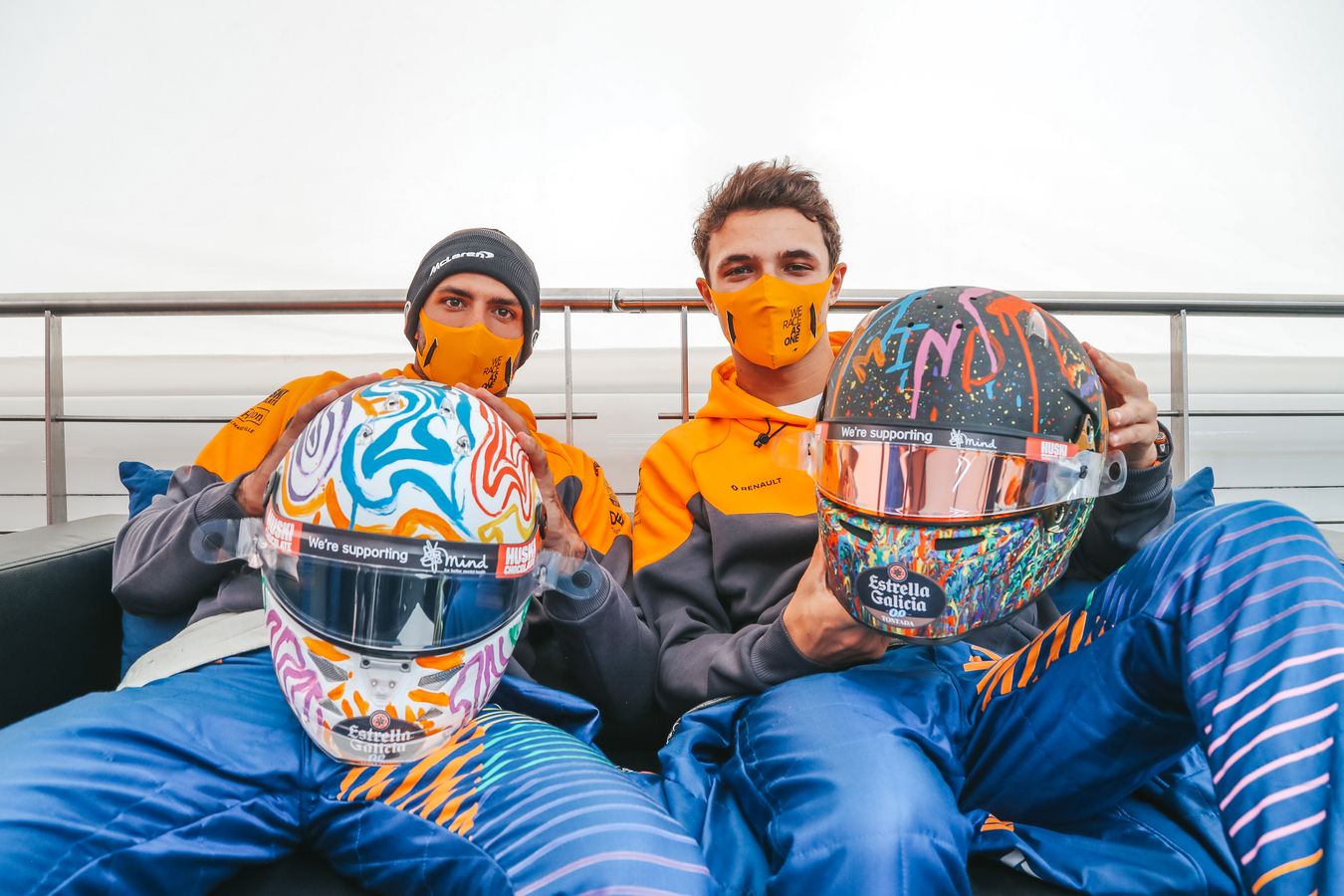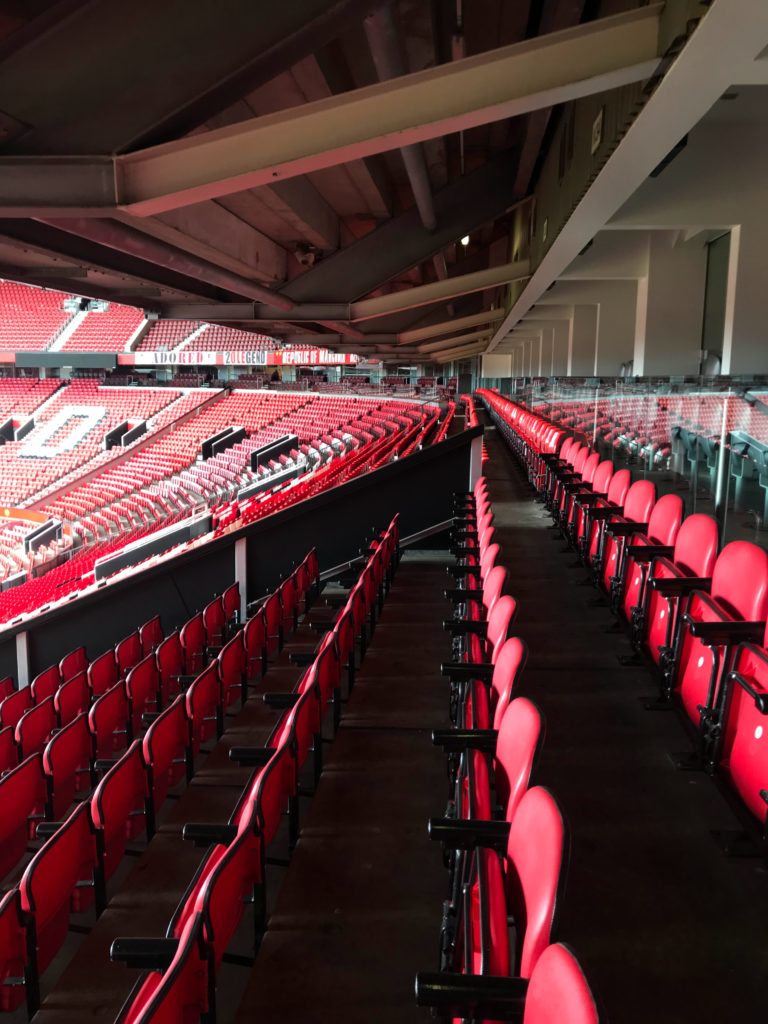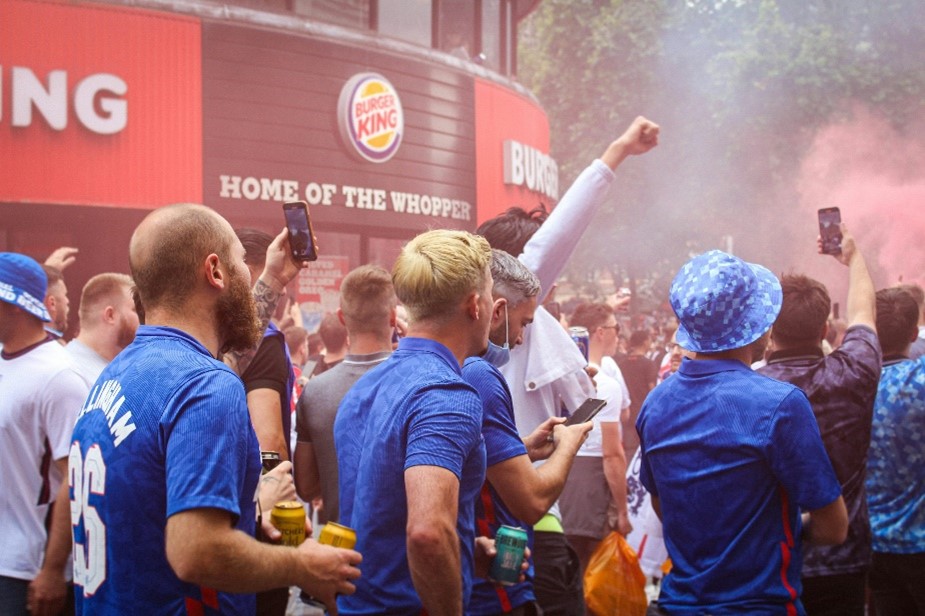2020 saw all areas of our lives disrupted and changed, with omnipresent predictions of a “new normal” once we come out the other side. The COVID-19 pandemic is still impacting us all, and whether we want it or not, it will continue to do so for the foreseeable future.
What that means for brands who work in sports sponsorship is a need to continue to shift and adapt to everchanging circumstances, as every part of the sporting value chain has been affected. From individual athletes, teams and leagues, the sports sponsorship landscape is changing, and if managed properly it could provide more value than ever before.
A recent Nielsen survey[i] of 5,000 brands in the sector showed that a staggering 62% of them were in the process of changing their strategies to respond to the crisis and ongoing developments. Reflecting on the shifts in sponsor objectives and strategies that 2020 has brought, Nielsen Sports’ Head of Global Research, Mike Wragg, said that it wasn’t about new ones coming in, rather existing trends being extremely accelerated.[ii]
So, we thought we’d take a look at this in more detail – here are some of the trends mentioned by Nielsen (a focus on digital and the blurring of CSR and brand purpose) as well as a selection of our thoughts on what the 2021 sports sponsorship landscape is likely to bring.
1. An accelerated shift to digital
If the pandemic has shown brands one thing, it’s that they now have to think digital-first. In an uncertain world, where physical events and activations are at risk of being cancelled at the last minute, brands need to ensure they have digital-first contingencies in place to engage with consumers where they feel safe.
Importantly, it isn’t just existing consumers that are looking for more digital content and accessibility – the emerging consumer groups of GenZ and GenAlpha are digital-first from the start. They grew up with screens in their hands and access to information at their fingertips.
They don’t consume sports in a traditional way on TV, rather utilise OTT and streaming platforms giving them flexibility and more choice (i.e. watching a game with/without crowd noise, rewinding to goal moments, changing camera angles between F1 driver cockpits – all at will). As mentioned by Jan Kees Mons from Sport Tomorrow, they want to decide when, if and where they watch.[iii]
With consumers’ attention spans rapidly decreasing, and with numerous forms of entertainment now embracing the digital format, live sport will always have its place. Sponsors are looking to establish data-driven connections with their fans, building on the preferences to deliver valuable and meaningful content at the right times.
WARC’s recent report shows that one-third of football fans in the UK say they are interested in exclusive or behind the scenes content, the most popular way to enjoy the sport beyond attending matches.[iv] This means teams and leagues have to be able to provide that data to back their partners, formats to increase fan engagement and ultimately, prove they can deliver ROI.
In the early days of the pandemic, Mediacom predicted it is going to become more and more important for sport and sponsors to develop video strategies, valuable for the data and fan interaction they can provide.[v] This remains even more true as we go into 2021, with consumers now not only used to, but expecting engaging content, be that video or AR enhanced in-match experience.
This type of content is optimised for the digital-first world we now live in, and is likely to continue to drive more fans to sports they wouldn’t traditionally have access to. We no longer have to attend an event, match, or game in person – all we need is a device and we’re in.
2. The rise of eSports
One of the biggest emerging players on the digital scene is eSports. The next generation of consumers see e-Sports as part of their daily lives. They grew up with gaming omnipresent on their phones, tablets, and consoles, and therefore are easily accessible to brands via channels not traditionally seen as an area for sponsorship.
Video-game streaming saw and all-time high in 2020, with the F1 e-Sports Virtual Grand Prix series, organised when physical races had to be put on hold, achieving a record-breaking 30 million views across TV and digital platforms during lockdown [vi]. Content from the series was also used to further engage with fans of the sport, gathering 695 million impressions across multiple platforms.
The Virtual Grand Prix saw 11 F1 drivers take to virtual tracks, joined by a host of famous faces including former driver turned motorsport journalist and presenter, David Coulthard, Belgium goalkeeper Thibaut Courtois, and Manchester City forward Sergio Aguero.
Moreover, throughout the series, drivers including Charles Leclerc, George Russell, Lando Norris and Alex Albon all regularly connected with fans through their personal Twitch accounts, reaching an additional 2.7 million viewers.[vii] This gave them a chance to showcase their personalities to a wide audience, in return growing their own social media following and increasing sponsorship attractiveness of the sport and themselves as individuals alike.
Real Madrid forward Marco Asensio also took his skills online, winning the LaLiga Santander Challenge – a tournament in which players faced off as their own teams. This provided extra fodder for the brand’s channels and spurred the adoption of a new channel on Twitch, which the club put together in two days. As a recent WARC report[viii] states, while any full conclusions are still a way off, video-game streaming offers a way to host a game of some kind and bring out a personality while engaging other networks by bringing in high-profile fans or players.
3. Year-round fan engagement
Events such as the Virtual Grand Prix pave the way for another important trend across multiple sports – all-year-round fan engagement. Largely due to the effects of the pandemic, which facilitated our ability to see our favourite athletes in the private settings, homes and gardens, we are no longer satisfied with watching our favourite teams compete in-season only. We want to know what they’re up to in the off-season as well.
With the proliferation of 24/7 sports TV channels, numerous podcasts about every sport under the sun and dedicated radio programmes and even stations, there no longer is an off-season. There have never been more opportunities for brands to capitalise on the fan need for content than now, increasing their engagement with not only their clubs and teams but also – their sponsors and partners.
A recent Deloitte survey found that the more fans are engaged year-round, the more likely they will spend on tickets and merchandise during the season. Further, off-season engagement can be a lever for moving fans up the tiers of fandom—pushing a casual fan who only watches games on TV to finally attend a game in person.[ix]
The survey results showed that:
- 95 percent of fans today have some form of interaction with their favourite team or league in the off-season
- In-depth content consumption was associated with 20 percent higher spend than general news consumption
- 40 percent higher preference among Millennials than Baby Boomers for using social media to obtain information on their favourite team and players
- More than 60 percent of fans say a great “year-round experience” would make them more likely to be more engaged with the team in the coming season, and 55 percent say it would make them more likely to purchase a ticket in the future[x]
Fan engagement has been on organisations’ agendas for a while now, but the pandemic really amplified the need for them to be able to deliver year-round activity that builds a two-way relationship with fans, increasing engagement in the off-season to capitalise on in the on-season.
4. Transparency and authenticity
To be able to engage with fans all year round, organisations and brands need to remember that we now live in a world coming out of a pandemic, a world in which we all experienced an insane amount of video calls and in effect, invited colleagues and clients into our homes. This has led to more transparency but also more authenticity – suddenly, we have all become a bit more human.
This means that now more than ever, brands need to tap into the need for relevancy and authenticity. In 2021, marketing has to be even more carefully thought out than in the past and directed at the right audience, at the right time. We have all seen a more human side of each other, which means a more targeted approach from communication efforts going forward.
Consumers now seek out not only what they need and want, but also, what aligns with their personal beliefs and values. If a brand is able to show support for a club or team in an authentic way, it’s fans will surely appreciate that – as long as there is enough transparency for them to see that those values lie at the brand’s core, and not just in a campaign.
5. Political crossover
Although 2020 will forever be marked by the pandemic, it also saw another very important shift in the world of sport – it became commonplace for athletes and teams to take political stands and speak out on issues like social justice.
We saw Premier League players taking the knee before games and Lewis Hamilton wearing BLM shirts to podiums. While there is highly charged debate[xi] as to whether this has positively or negatively affected sports viewership this year, one thing is clear – it is likely athlete support for causes close to their hearts will continue to grow in 2021.
The political and social agenda involvement in the world of sports offers brands another chance to showcase their alignment with causes close to their customer’s hearts, however it is important that in 2021 they continue to do so in an authentic way.
As a Deloitte analysis of the issue[xii] states, not all organisations share the same view when it comes to the social justice movement. Across semi- and professional sports, some don’t want the politics of social justice interfering with their entertainment.
In 2021, it is likely organisations will look to find a balance between the two, giving their athletes a chance to express their values as and when they want to do so while ensuring the events themselves are kept to sporting rivalry.
When asked about the need for brands to reinvent themselves in response to Covid-19 and the Black Lives Matter movement in an interview with WARC[xiii], Mark Pritchard, P&G’s chief brand officer, said: “It’s about reinventing ourselves with what we like to call “constructive disruption”. It’s leading the reinvention of ourselves from being brands and companies that are about themselves, to brands and companies that are being a force for good and a force for growth.“
More so than ever, in 2021 consumers will align their purchasing decisions with brands that stand for something they also believe in. For sports sponsors, this will be even more important as fans want to see their clubs associate themselves with sponsors who share common values.
6. CSR opportunities
The main purpose of most sponsorships is brand awareness. By association with a sports organisation, brands benefit from a positive association in the mind of consumers. This association gives brands a platform to improve brand image while aligning themselves with worthy causes.
A good example is Remington’s recent donation scheme to the Manchester United Foundation[xiv]. As the clubs Official Electrical Styling Partner, Remington saw an opportunity in maximise on a key gifting period for their co-branded collection (Christmas) while encouraging consumers to “give a gift that gives back”, with 10% of all December sales donated to the Manchester United Foundation.
It is likely that 2021 will see more of similar activations, with sport organisations looking to support the most impacted sectors with a variety of activities – and turning to their partners for help to do it.
It is worth noting that numerous organisations also have strong ties to charities, with athletes proud to support them. A recent example was F1 drivers Lando Norris and Carlos Sainz creating special helmet designs to wear at the Eifel Grand Prix ahead of World Mental Health Day in support of mental health charity Mind, a partner of the McLaren team for which both drove at the time. This poses opportunities for other team partners to work with the charity, showing increased alignment with its core values and integrating marketing efforts to reach a broader pool of fans.

Image source: McLaren
7. Women’s sport sponsorship with a purpose
Another trend which will undoubtedly continue to rise is the interest in women’s sport sponsorship. As already discussed, 2020 was a year of social issues becoming part and parcel of sport, one of them being equality in all its forms. It is when brands have started to realise that women’s sport sponsorship isn’t just a cheaper option but rather, a great way to reach an engaged audience.
Last February, Misha Sher, Worldwide Vice President, Sport & Entertainment at MediaCom said that “as such, supporting women’s sport is not just a marketing investment. It’s a demonstration of a company’s values, and a commitment to creating a more equal world”. A year on, this could not be more true.
However, brands need to remember that because the area of women’s sport sponsorship is relatively new compared to more established deals in place, the return on investment needs to be measured long-term rather than short-term – tricky in a world when results are to be delivered instantly.
The above means there is still more interest in better established partnerships which have the date to back up the promised results. However, with women’s sport on the rise (a combined 1.12 billion viewers tuned in to watch the 2019 FIFA Women’s World Cup! [xv]), we can expect the trend to shift in 2021 in anticipation of the upcoming Women’s Euro Championship in 2022.
What’s next?
The above outlines key trends we see taking place in sports sponsorship in 2021. While some are a continuation of existing tendencies, others are a direct result of the Covid-19 pandemic and its effects as well as the socio-political movements born in 2020.
In a year when live sport is likely to come back on a massive scale, with the likes of the UEFA Euro Championship, the Rugby League World Cup 2021 and The Olympics all taking place, rightsholders have an unprecedented opportunity to capitalise on their deals and make a significant impact on their customer base.
Whether they choose to take that opportunity and to what extent lays with their marketing teams and agencies. These will have the unique opportunity to learn from a year of fans changing the way they participate and engage with their favourite sports, a change that is likely to stay for good.
One thing is for sure – we will certainly see brands and sponsors capitalising on every opportunity they get to use rights they weren’t able to in 2020, showcasing the power of sports sponsorship and demonstrating its growing ROI when live sport returns.
Hatch are on-hand to support brands and sporting outlets in their sponsorship activity. Whether it’s a conversation about the opportunity or a strategy on ho to use those all-important rights, we’re here to help make 2021 the biggest and best year yet for sport sponsorship.
End Notes
[i] Leaders, “Nielsen Sports’ Mike Wragg on The Changing Value of Sponsorship and its Relevance in the Marketing Mix”
[ii] Ibidem
[iii] Jan Kees Mons, “10 important future trends in sports sponsorship”
[iv] Rob Clapp, WARC, “Trends of the Month: Ad challenges, sports and mobile video”
[v] Mediacom Sport & Entertainment, “The future of the sports industry. Navigating the sporting landscape in a post Covid-19 world”
[vi] F1 website, “Formula 1 Virtual Grand Prix series achieves record-breaking viewership”
[vii] Ibidem
[viii] WARC, “How Real Madrid is pivoting to a new football reality”
[ix] Deloitte, “Say Goodbye to the off-season. Engaging sports fans year-round.”
[x] Ibidem
[xi] John Jilotv, martin., “Sports Marketing Trends for 2021”
[xii] Deloitte, “2021 outlook for the US sports industry”
[xiii] Alex Brownsell, WARC, “How sponsorship marketing can rediscover its stride in 2021”
[xiv] fcbusiness, “Remington Pledge Support to Manchester United Foundation”
[xv] WARC, “Women’s sport sponsorship is more than a media buy”





